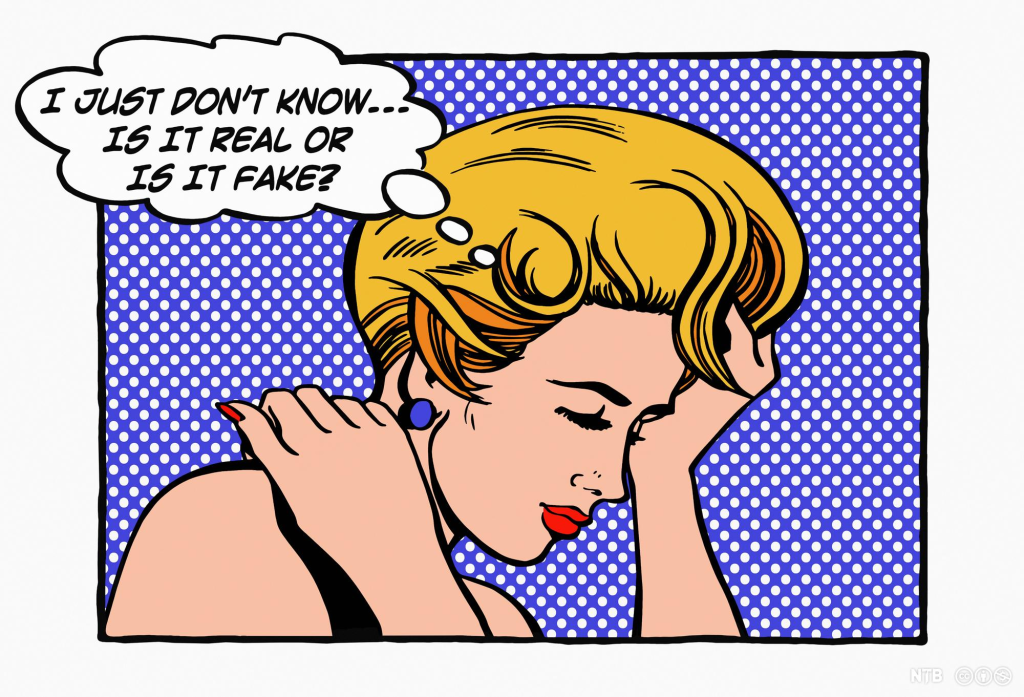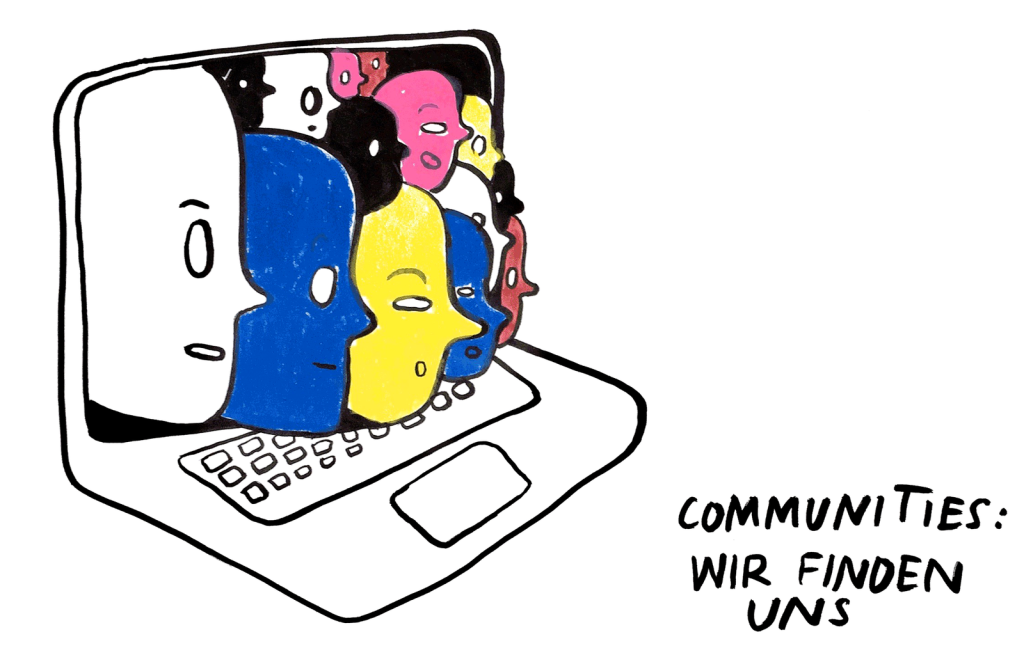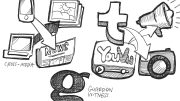
Smoke and Mirrors: The Psychology of Internet Control | DEANLONG.io by Hongxin(Dean) Long is licensed under CC BY-NC 4.0 DEED
Introduction
In this era of rapid development in internet technology, social media platforms, video streaming websites, and other information platforms have experienced explosive growth, immersing each individual in a colorful electronic world. In this virtual realm, we can access vast amounts of the latest information, read content we enjoy, and express our own opinions. It seems as if we are free to navigate this space. The internet is like a dreamland, where we consistently discover intriguing content and engage with like-minded users, crafting our main pages into a haven to the extent that we can spend hours engrossed in it. This appears to be a utopia—a place where we can avoid annoying information that doesn’t interest us, steer clear of people with differing beliefs, and focus solely on our comfort zone, where every day seems filled with ‘good news’. Everything appears to be so perfect, but is it truly a harmless utopia?
What is ‘Information Cocoon’?
The term ‘information cocoon’ was originally coined by Harvard University scholar Cass R. Sunstein and was first introduced and explained in his book “Infotopia: How Many Minds Produce Knowledge” published in 2006. Sunstein pointed out that when individuals focus solely on information that interests them, they gradually confine themselves, much like silkworms in a cocoon, limiting their lives within this cocoon-like enclosure (Sunstein, 2006).
This term exposes a common phenomenon on the internet, where due to the limited capacity of human attention to handle the overwhelming volume of information, people resort to filtering and ignoring content and viewpoints that do not interest them. They selectively read and engage with information to solve this problem. Within this cocoon, people tend to focus exclusively on homogeneous information, selectively interact with like-minded individuals, self-isolate within this incubator, and gradually lose interest in actively exploring other domains. Personalized algorithmic services also cease to push news from different worlds, solidifying barriers between different fields (Hou, 2023). People exist within the same internet but live in different enclosures, engrossed in this open yet conservative utopia.
The Hidden Trap of Gentleness
Information cocoons provide a comfortable environment where people become reluctant to proactively engage with other news. Information becomes increasingly narrow, with a complete narrative being fragmented into different pieces. Algorithms select the pieces that users might be interested in and place them inside the cocoon. This subtle process unknowingly surrounds individuals with limited and biased information, deepening inherent prejudices and constraining the breadth and depth of considering alternative possibilities (Fan and Sun, 2019). For instance, a recent study revealed that fake news spreads faster than true news on Twitter. If these algorithms distribute pseudo-truths, such as “explosive romance” or “XXX’s affair,” to users before they are confirmed as facts, it implies that

users involuntarily engage with these sensationalized pieces of information. They become unwitting participants in the spread of rumors, choosing sides in uncertain matters, and subsequently become more narrow-minded and biased while experiencing a decline in cognitive abilities. If the news later reveals a different ‘truth’, people may react with anger, blame, information anxiety, and other emotions, which contradicts the principle of human happiness and stability. This seems like an invisible form of imprisonment that only allows users to focus on a few topics of interest or some sensory-stimulating content. The concepts and values they encounter are those they agree with and deem necessary, leading to a more steadfast stance, neglecting the underlying causes and fundamentals of the issues, and ultimately achieving self-isolation, all while overlooking the lurking crisis.
We must begin to ponder: Why has the internet, originally intended as an open space, paradoxically transformed into a closed, thought-restricting cage? In fact, there is a cognitive trap at play here—the ‘Echo Chamber Effect’.
Echo Chamber Effect/ Filter Bubble
In this cocoon of personal interests, everything aligns with an individual’s preferences. All information is generated for the self. Under the influence of big data algorithms, homogenized content endlessly repeats, reinforcing people’s interests and deeply ensnaring individuals in a sense of self-identity. This ‘comfort zone of information’ has now transformed into an ‘information prison’ (Cinelli, 2021). At this point, individuals have essentially confined themselves within their own information cocoon, seeking refuge within its walls and resonating only with like-minded individuals. The original purpose of the internet was to broaden the horizons of ‘caged birds’ and introduce them to the world beyond the cage. However, in real life, thousands of ‘caged birds’ come to know, affirm, and identify with each other through homogenized information. After prolonged exchanges, they reach a consensus and staunchly stay within the cage, deeming it the safest and most comfortable place. Within this closed space, most of the information users receive supports their existing viewpoints, leading them to believe that their beliefs represent the mainstream. Those within this environment often perceive these distorted narratives as the entire truth and regard their own social group as the correct one. This phenomenon is known as the ‘echo chamber effect’, also referred to as the concept of the ‘filter bubble’ (Ross, 2022).
The danger of the echo chamber effect (filter bubble) lies in the high concentration of like-minded individuals who universally believe their own perceptions to be correct. This intensifies internal group identity while devaluing external groups, ultimately contributing to the polarization of communities and exacerbating social conflicts (Cota, 2019).

Here’s a virtual dialogue example explaining the echo chamber effect:
Jerry: Hello, I’m Jerry, and I love eating apples.
Ben: Hi, I’m Ben, and I love apples too.
Jerry: Wow, we share a common interest! That’s awesome!
Ben: Yeah, apples are really delicious, sweet, and crisp.
Jerry: Absolutely, and apples are packed with nutrition and benefits.
Ben: Right, so we should both eat an apple every day.
Jerry: Yes, we’re both smart people.
At this point, they enter an echo chamber with only the two of them.
Sara: Hi, I’m Sara, and I don’t like eating apples.
Jerry: You don’t like apples? How could you say that?
Ben: Yeah, you don’t like apples? There must be something wrong with you!
Sara: I just think apples are too sweet for my taste.
Jerry: Too sweet? That means you should definitely eat them. Sweet things make people happy and joyful.
Ben: That’s right. And don’t you know how many benefits apples have? Not eating them is like giving up on health and beauty!
Sara: Please forgive my ignorance. Can you tell me some facts and evidence about apples?
Jerry: Facts and evidence? We don’t need those things. We just need to believe in our feelings and experiences.
Ben: Yeah, we just need to listen to our inner voices.
At this point, they exhibit the characteristics of the echo chamber effect: isolation, extremism, homogenization, and repetitive reinforcement.
How to Break Free from the Cage?
If individuals become aware that they are trapped within an information cocoon and wish to avoid creating an echo chamber effect and mitigating social conflicts, there are several measures and strategies they can adopt. Here are some relevant recommendations (Peng, 2021):
- Assess Information Sources: Verify information from multiple platforms to obtain a more comprehensive understanding.
- Turn Off Personalized Recommendations: Actively explore areas and topics that you haven’t previously ventured into to broaden your knowledge.
- Engage with Differing Opinions: Pay attention to and contemplate comments and viewpoints that differ from your own, cultivating critical thinking skills.
- Read More Books: Expand the depth and breadth of your perspectives by reading books on various subjects.
For those interested, you can find more related solutions in the following video.
Conclusion
In conclusion, while information cocooning may offer convenience in searching for relevant information, it carries significant potential dangers for individuals’ long-term critical thinking abilities and societal harmony. The concept of the information cocoon is nothing more than a utopian illusion. Continuing to cocoon oneself can lead to extremist and rigid thinking, which is detrimental to personal development. Furthermore, it can reinforce the division of people and foster polarization, exacerbating social conflicts. The information cocoon is, in essence, an invisible cage with more drawbacks than benefits.
References
Cinelli, M., de Francisci Morales, G., Galeazzi, A., Quattrociocchi, W., & Starnini, M. (2021). The echo chamber effect on social media. Proceedings of the National Academy of Sciences – PNAS, 118(9). https://doi.org/10.1073/pnas.2023301118
Cota, W., Ferreira, S.C., Pastor-Satorras, R. et al. Quantifying echo chamber effects in information spreading over political communication networks. EPJ Data Sci. 8, 35 (2019). https://doi.org/10.1140/epjds/s13688-019-0213-9
Fan, H. X., and Sun, J. B. (2019). Algorithmic bias and digital curse in the era of big data: breaking the “information cocoon”. Chin. Publish. J. 10, 60–63. doi: 10.3969/j.issn.1002-4166.2019.10.015
Hou, L., Pan, X., Liu, K., Yang, Z., Liu, J., & Zhou, T. (2023). Information cocoons in online navigation. iScience, 26(1), 105893–105893. https://doi.org/10.1016/j.isci.2022.105893
Langin, K. (2018). Fake news spreads faster than true news on Twitter—thanks to people, not bots. Science (American Association for the Advancement of Science). https://doi.org/10.1126/science.aat5350
Peng, H., & Liu, C. (2021). Breaking the Information Cocoon: When Do People Actively Seek Conflicting Information? Proceedings of the Association for Information Science and Technology, 58(1), 801–803. https://doi.org/10.1002/pra2.567
Ross Arguedas, A., Robertson, C., Fletcher, R., & Nielsen, R. (2022). Echo chambers, filter bubbles, and polarisation: a literature review. Reuters Institute for the Study of Journalism. https://ora.ox.ac.uk/objects/uuid:6e357e97-7b16-450a-a827-a92c93729a08
Sunstein, C. R. (2006). Infotopia : how many minds produce knowledge. Oxford University Press. https://ebookcentral-proquest-com.ezproxy.library.sydney.edu.au/lib/usyd/detail.action?docID=271677&pq-origsite=primo#
YouTube. (2017, June 3). How can you burst your filter bubble? – BBC trending. YouTube. https://www.youtube.com/watch?v=mh1dLvGe06Y



Be the first to comment on "Information Cocoons: Utopia or ‘Prison’?"